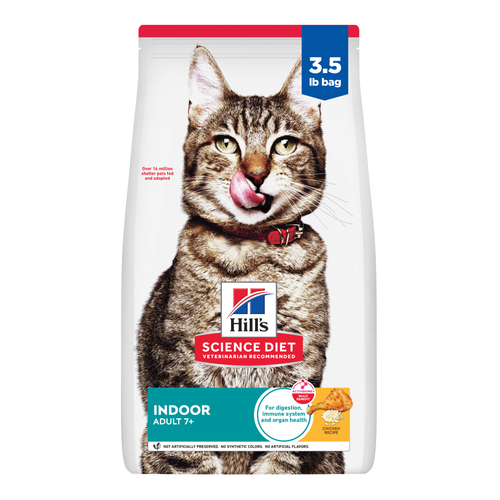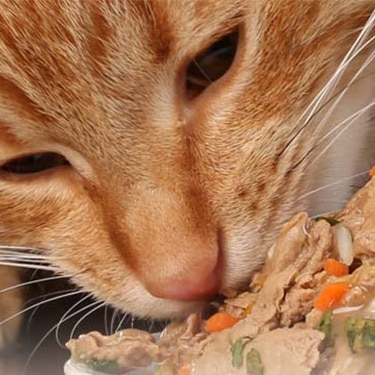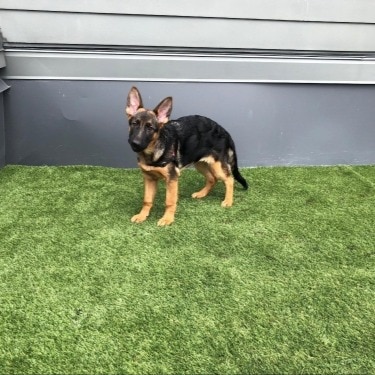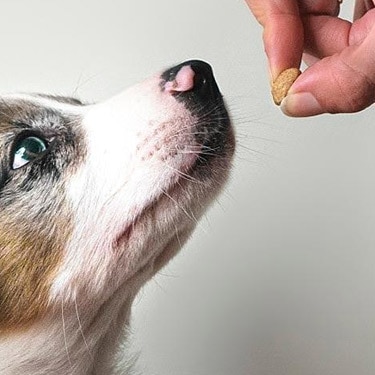

Puppies arrive in the world eager to learn, with curious minds and boundless energy. Starting training immediately allows you to take advantage of that enthusiasm. Remember that pups learn by making mistakes, which can sometimes mean risky behavior, chewed shoes and raising your (or the other pets') stress levels. Command training not only helps prevent these mishaps but also guides early puppy development, building a foundation for safety and socialization during their most impressionable months.
This guide to puppy command training will show you how to teach a puppy to sit, fetch, drop it and more to get you started on the right foot.
Your Guide for Essential Puppy Commands
Not every puppy is destined to compete in obedience trials or dog sports, but every puppy needs to learn the basics to become a well-mannered, happy member of your family. The good news is that all puppies are capable of learning foundational skills. Here's how to teach a puppy to sit, recognize their name, and master other essential commands.
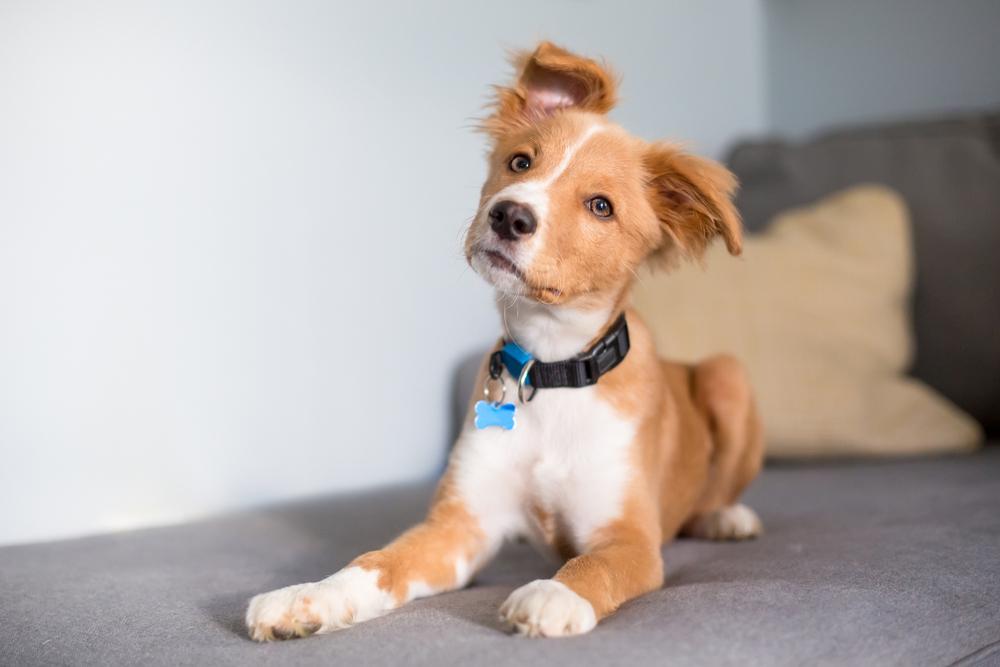
How to Teach a Puppy to Sit
Try lure training with a favorite treat to persuade your pup to sit.
Show your puppy a favorite treat. For pups that aren't keen on treats, try a favorite toy.
Hold it slightly above their nose.
Say, "King, sit," and move the lure forward up over their head. To keep their eyes on the reward, they'll need to sit to avoid falling over.
Once their tail hits the floor, give them the reward.
Eventually, your puppy won't need the lure to understand what the "sit" command means. Once they've mastered it, ask them to sit as a request for you to open the door or to set down their food, for example.
A note on training treats: To avoid overfeeding, treats should make up no more than 10% of your puppy's daily calories. Alternatively, you can use their regular kibble as rewards and simply subtract that amount from their daily food portion.
How to Teach a Puppy Their Name
Getting your puppy's attention supports the overall training process, so practicing name recognition is a good start.
Pair their name with good things. For example: "Want to play, King? Dinner time, King." This helps your puppy learn their name — and pay attention when they hear it.
A short one- or two-syllable name often works best. Use a high-pitched, happy voice whenever you say it. You want your pup to associate their name with good things only.
As soon as your pup recognizes their name, use it during training the other essential puppy commands.
How to Teach a Puppy to Stay/Wait
"Wait" means "don't move forward." This helps prevent your pup from tripping you as they dash ahead or rushing into the yard while you make sure the coast is clear. In case of emergency, this command could save a puppy's life, such as when it stops them from rushing into traffic. Use a door to teach this essential command.
At the door, say, "King, wait."
Slowly open the door. If they move forward, close the door.
Repeat until your pup recognizes the cause and effect; the door only opens if they stay still.
After they remain in place for five seconds with the door open, give a release word, like "yes" or "OK," to communicate that it's OK to move.
Going out the door rewards your pup, so no treat is required here!
A "stay" command means your puppy doesn't move forward, backward or from their position until you release them. Don't expect a young pup to master this until they've learned all the other commands. Then, you can drill your pup on a "sit, stay" command, asking them to sit and slowly increasing the amount of time they hold the position.
How to Teach a Puppy to Come
Always associate calling your pup with a reward as they're learning (rather than, say, calling them for a nail trim). "Come" should prompt tail-wagging joy.
Say, "King, come!" in a high-pitched tone. Then, run away from your puppy. Natural chase instinct will prompt them to run after you.
Let them catch up to you and give them a reward, such as a toy, treat or snuggle.
If they refuse to come, fall on the floor and whimper to entice them to come see what's wrong. Then, give them the reward and try again.
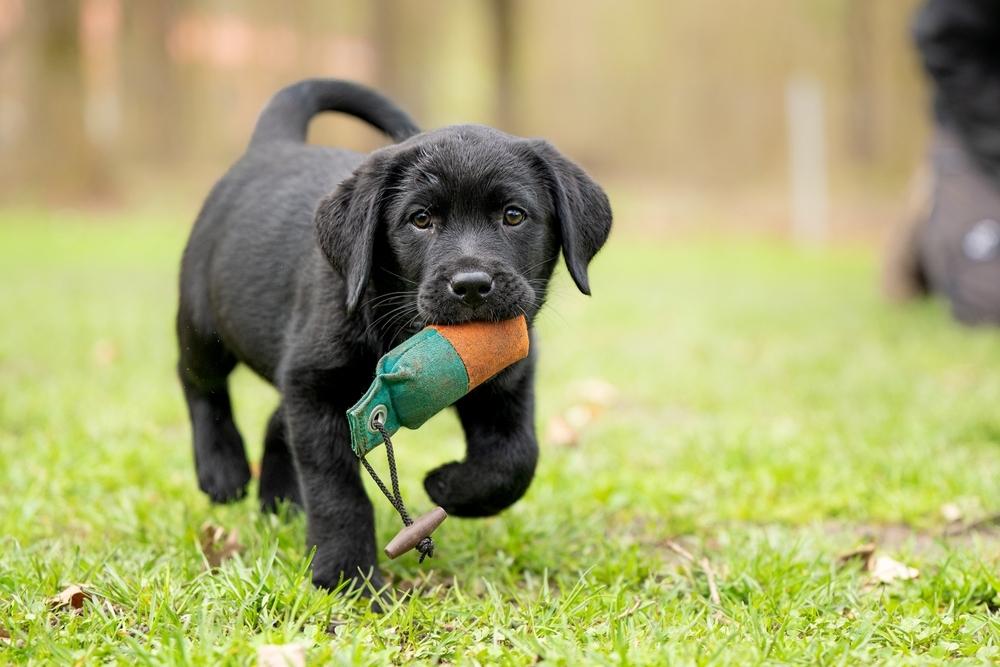
How to Teach a Puppy to Fetch
Experiment with various toys — bouncy balls, squeaky rubber sticks, fleece stuffies — to see which appeals most to your pup. Then, use that to train.
Hold out the toy for your pup to sniff or mouth. Say "good King!" for any signs of interest, especially physical contact. If they take the toy in their mouth, say "good hold!," give them lots of praise and offer a treat. Practice having your pup touch, mouth or grasp the toy, labeling the action as "hold."
Once your puppy consistently holds the toy when asked, move on to "fetch." Start by setting the toy beside you where your pup can easily reach it, and say, "hold." When they pick it up, praise them and offer the reward. Practice this repeatedly, gradually moving the toy farther from you until your pup understands they can pick up and hold the toy from your hand, the floor or anywhere else.
Begin tossing the toy for your pup, and praise them when they pick it up. Since they've already learned that a treat follows your praise, most pups will happily return to you with the toy and release it.
As your puppy begins coming back to you, say "fetch." With repetition, your pup will understand that "fetch" means "run after the toy and bring it back for a treat."
How to Teach a Puppy "No"
When you observe an unwanted behavior, interrupt the action with a growly "no." Use this single word consistently to teach puppies unacceptable behavior. Once they stop, praise and reward them. After they've learned one of the other commands, you can use "no" to interrupt poor behavior and give them an alternative action, like "sit," that you can praise and reward. Withholding a reward can also effectively communicate what you don't want them to do.
How to Teach a Puppy to Leave/Drop It
Puppies naturally explore their world with their mouths. That curiosity can get them into trouble, or even danger, should they bite or mouth the wrong thing, like an electrical cord. Damaging your property can also strain the bond you're building. Teaching them to relinquish the treasure helps keep them safe and protect your property.
First, puppy-proof your home to keep forbidden items out of reach.
Keep your emotions in check. Do not yell at or chase your puppy. Many puppies quickly learn that stealing a shoe or your wallet gets you to chase them — what fun! Chasing can quickly become a favorite game and inadvertently rewards them. Instead, use a growly "no."
Call "come!" and run the other way, prompting your pup to chase you. Have a treat ready to reward them for coming to you. To eat it, they must drop the object. Prompt the action by saying "drop it."
You can also offer a trade, swapping the forbidden object with your puppy's favorite toy. Start playing with the toy yourself — squeaking it, tossing it from hand to hand, having a grand time — until they can't resist joining you. When they drop your item, give them the toy. Couple the swap with "drop it," praising as you make the trade.
Command Training Challenges
Some puppies pick up commands more quickly than others, often due to breed tendencies that make certain behaviors come more naturally. For instance, retrievers tend to fetch instinctively, while bloodhounds are often more focused on following scents than obeying commands. Additionally, pups who are eager to please (biddable) or who love treats may learn faster than pups who are more independent or indifferent to treats.
Your puppy may respond to "leave it" easily until it's a high-value object, like a chicken bone dropped from the dinner table. A big part of puppy training is choosing your battles, recognizing your pup's strengths and preventing potential problems before they start. The time you invest in command training helps build your bond, boost your puppy's confidence and lay the foundation for a lifetime of good behavior. It's also tail-wagging fun for you both!




